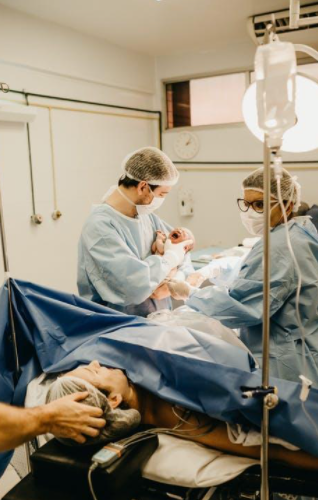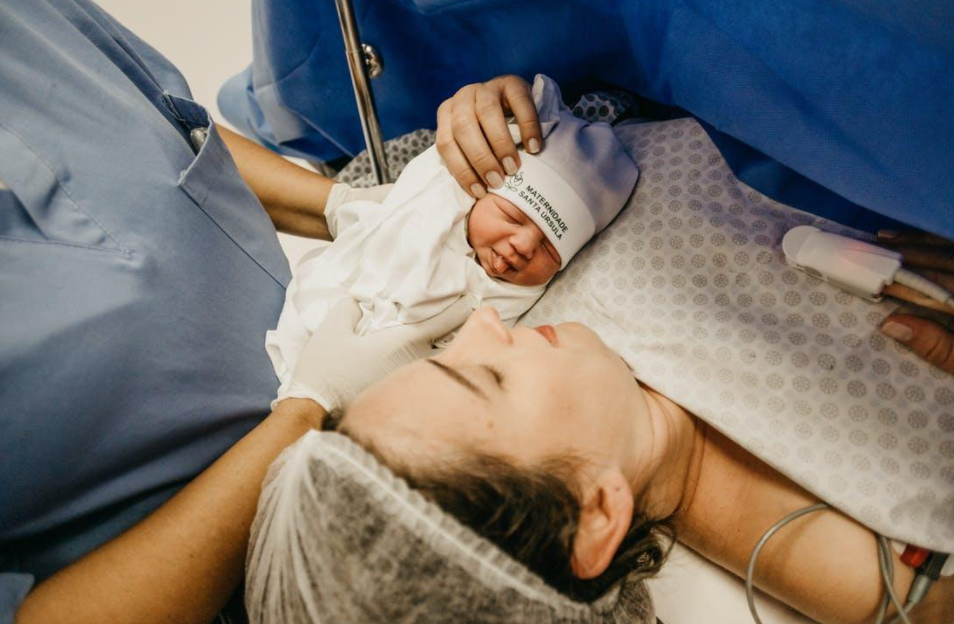In 2006, Mr. Jorge Odon invented a low-cost birthing device that had the potential to transform modern assisted vaginal delivery. His namesake, the Odon Birthing Device, emerged in spite of the inventor having no experience in obstetrics himself; the contraption was, in fact, an elaboration on an old party trick: removing a cork from a wine bottle via a plastic bag. A car mechanic by trade, Mr. Odon was extremely savvy with tools, further translating these skills into the creation of such a birthing device. He observed the strikingly medieval use of forceps and vacuum extractors in typical childbirth processes, which can cause bruising and/or scabbing when used on an infant. Thus, being a father of five equipped with the background to create such a technology, he began to prototype a more contemporary device that he hoped would revolutionize modern day vaginal delivery.
At the 65th World Health Assembly, Dr. Margaret Chan, the World Health Organization General Director, said that the Odon device “offers a low-cost simplified way to deliver babies, and protect mothers, when labour is prolonged. It promises to transfer life-saving capacity to rural health posts, which almost never have the facilities and staff to perform a c-section” 1.

History of Birthing Devices
Despite modern medical advancements, many obstetricians still use birthing instruments that have seen little improvement from their initial development. The two most common birthing instruments still used today are forceps and the vacuum extractor, among various others. The Chamberlen family invented forceps in the 16th century, and their invention grew increasingly popular within the Victorian era.2 Forceps are still in use today and have not changed drastically since first being introduced. However, they have been known to cause serious complications in vaginal childbirth, increasing the risks of both hemorrhaging and vaginal tears. Even in spite of their medical risks, forceps are often the only tool available in low-income communities, augmenting the risk of maternal mortality. Another common birthing instrument is the vacuum extractor. First manufactured in 1838 by James Young Simpson, the vacuum extractor is a pump that employs vacuum suction to guide the fetus down the vaginal canal. This did not become a viable replacement for forceps until the 1950s.2 Unlike forceps, new developments in materials have improved the device. However, the vacuum extractor can still cause scabbing along the infant’s head and has not proved an adequate substitute for forceps.
Likewise, managing a prolonged second stage of labor can be completed via a cesarean section. It does not, however, involve vaginal birthing, and hence, does not correlate with the Odon device.
Another common delivery room tool is the speculum, which is utilized postpartum to remove the endocervical products of conception after the process of childbirth. This process is notoriously uncomfortable for the patient, and may also impede upon fetal safety and wellbeing.3
Listed below are various common medical materials typically employed during a normal childbirth.
- Scissors
- Amniotic hook, for rupturing vaginal membranes
- Hemostat
- Sponge holders, to prevent excess blood loss during childbirth
- Scalpel, in the case of a cesarean section
The aforementioned tools are fairly commonplace in the typical birthing process. The Odon Device, however, is not included on the basis that it is still undergoing laboratory testing to ensure full safety when put to use in a hospital setting 3.
The Odon Device: Early History
By November 2013, Odon’s idea had transformed into a prototype, whereby it garnered the attention of the World Health Organization for its avant-garde approach to assisted vaginal childbirth. It was later licensed by BD, a technological corporation headquartered in New Jersey, and was the inspiration both for a New York Times Article “Car Mechanic Dreams Up a Tool to Ease Births” as well as “Bump”, a play written by New York based Playwright Chiara Atik.4
How the Odon Device Works
Firstly, a double layer of plastic lining is inserted into the mother’s birthing canal and is wrapped around the infant’s head. A soft plastic bell, which perfectly adapts to the fetal head and prevents damage, is inserted along with the bag. A minimal and self-limited amount of air is then pumped into the bag, which inflates a chamber and causes the bag to gently grip the infant’s head. Given that the infant does not breathe through the nose until birth, there is no obstruction to the flow of oxygen. Once the bag is in place, the inserter is removed. Finally, the infant is pulled through the birthing canal, limiting the chance of bleeding or complications.2
Potential Disadvantages
While the Odon device holds a lot of potential, especially for reducing the risk of infant and maternal mortality in low-income communities, it is still undergoing a series of tests to ensure its safety. BD has acknowledged that the process has taken twice as long as expected, but that is simply due to the fact that all potential issues must be addressed prior to its release on the American market.
Two primary concerns regarding the device that have yet to be addressed include: the accurate positioning of the device and the amount of pressure applied to the baby’s head. Evidently, these will have an impact on the outcome of the birth, so attempts to standardize the usage of the Odon device have been put in place during clinical trials.

Advantages and Development
The Odon device will hopefully reduce the amount of Cesarean sections, as well as reduce the risk of mother-to-infant disease transference, including HIV. The device is also incredibly easy to use and can be operated by a midwife without a doctor present.
The World Health Organization has designed a study that seeks to “determine if the Odon Device is feasible, safe and efficient for delivering babies during the prolonged second stage of labour.”5 The study is designed to test the device over two phases, both of which will observe the device in varying scenarios.
- Phase one has already been implemented in health care centers in Argentina and South Africa: the device will be used on one hundred women with uncomplicated normal deliveries.
- The device will then be placed into phase two of research, where sixty women suffering from a prolonged second stage of labor will have an assisted vaginal birth with the use of the Odon Device.

The World Health Organization is confident the device will revolutionize assisted birthing and reduce newborn infections worldwide.
The World Health Organization recently completed another study involving 49 women, whereby the device was “…inserted successfully in 46 of the 49 women (93%), and successful delivery with expulsion of the fetal head after one-time application of the Odon device was achieved in 35 women (71%).”6 However, two-thirds had vaginal, cervical, or perineal tears upon completion of the birth. While the device is not ready for release in the near future, this study suggests that delivery via the Odon device will be considered plausible upon introduction to the American market.
Once the device does reach the market, BD has stated that they will team up with physicians from low- and middle-income countries to make the device a part of standard medical protocol. It will be offered to those aforementioned regions at a lesser price than in wealthier parts of the world.
References
1. Venema, Vibeke. “Odon Childbirth Device: Car Mechanic Uncorks a Revolution.” BBC News. BBC, 12 Mar. 2013. Web. 10 Jan. 2014.
2. Chan, Margaret, Dr. “A New, Simple, Low Cost Instrument for Assisted Vaginal Delivery.” Odón Device. World Health Organization, 21 May 2012. Web. 08 Jan. 2014.
3.Hoey, R., Allan, K. “Does Speculum Examination Have a Role in Assessing Bleeding in Early Pregnancy?” Emergency Medicine Journal. Vol 21, issue 04.
4. Hallett, Vicky. “Whatever Happened To … The Car Mechanic Who Invented A Device To Pop Out A Baby?” National Public Radio. Published 26 August 2018.
5.“Research & Development.” Odón Device. World Health Organization,Web. 13 Jan. 2014.
Last updated 16 August 2016.
6. The World Health Organization Odon Device Research Group. “Feasibility and Safety Study of a New Device (Odón Device) for Assisted Vaginal Deliveries: Study Protocol.” World Health Organization. Published 02 June 2013.
7. Schvartzman, Javier et al. “Odon Device for Instrumental Vaginal Deliveries: Results of a Medical Device Pilot Clinical Study.” World Health Organization. Published 12 March 2018.
8. O’Brien, Stephen et al. “The ASSIST Study – The BD Odon Device for Assisted Vaginal Birth: a Safety and Feasibility Study.” World Health Organization. Published 05 March 2019.
9. Bailey, P.E. et al. “Assisted Vaginal Delivery in Low and Middle Income Countries: an Overview.” National Library of Medicine. Published 31 Jan 2017.
10. Mayo Clinic Staff. “Vacuum Extraction.” Mayo Clinic. Published 18 August, 2020.
Last Updated 3 March 2022
